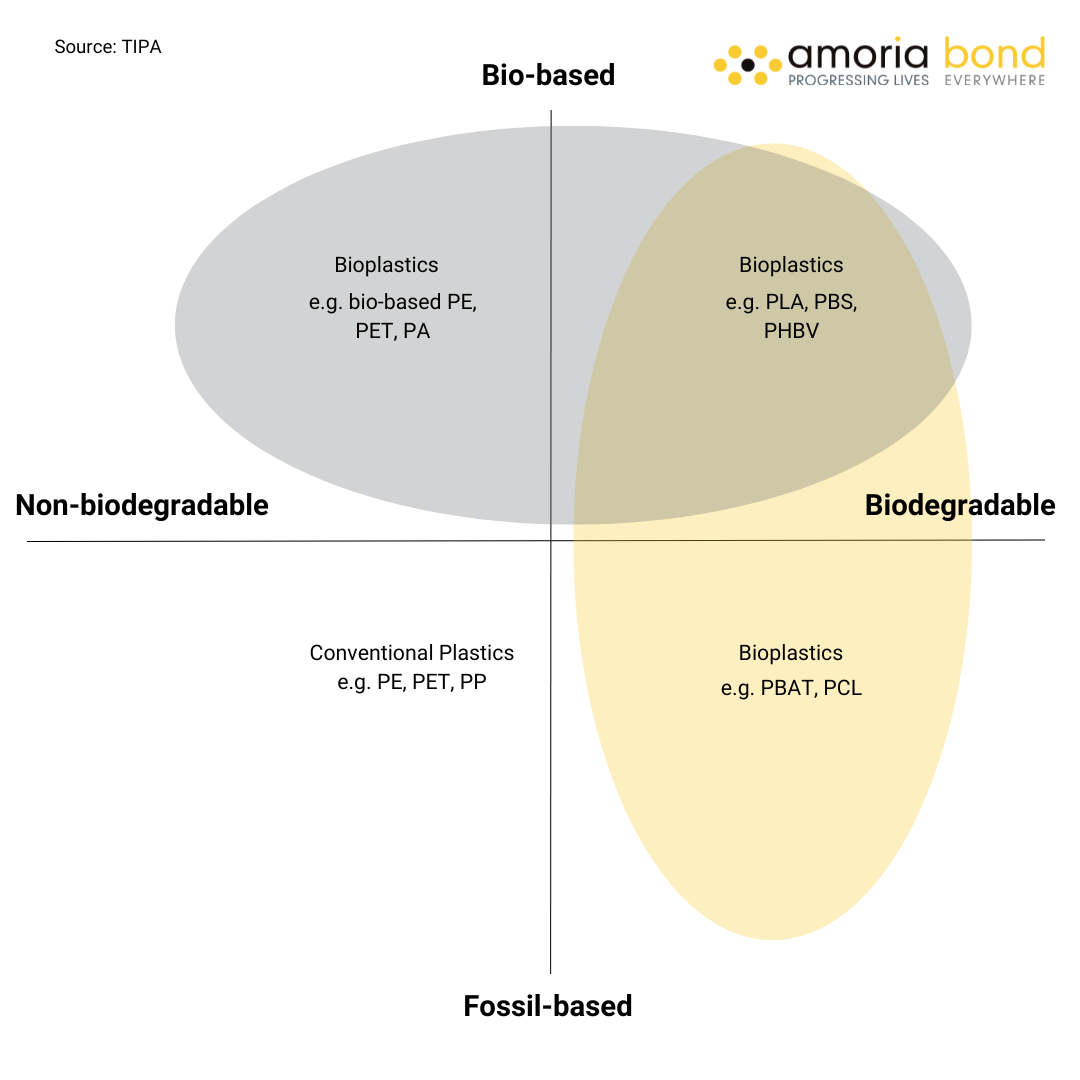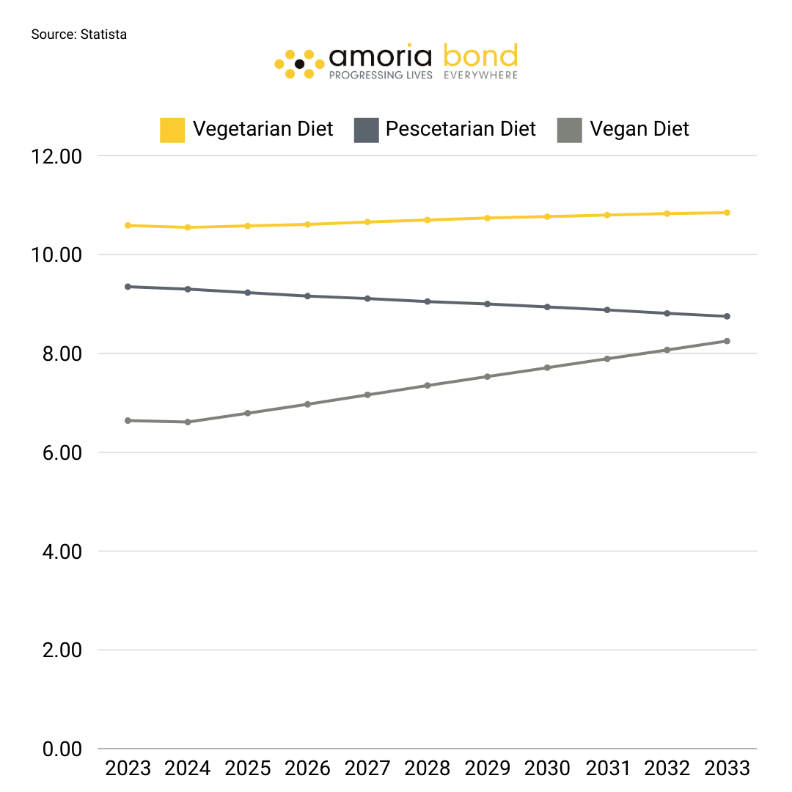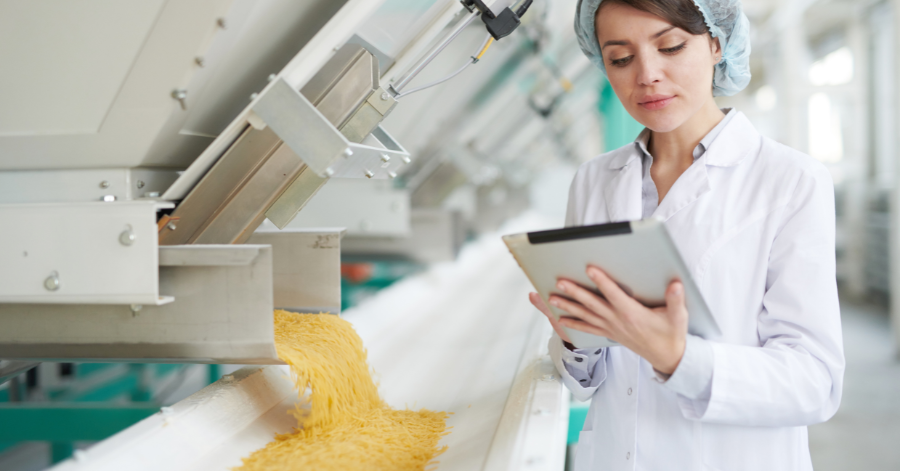Let’s look at some numbers to evaluate our current global food industry situation:
- Every year, around 8 million tons of plastic end up in the ocean.
- The Food and Agriculture Organization (FAO) of the United Nations states that to feed the predicted global population of 9.1 billion in 2050, farmers must produce 70% more food.
- The food technology market size will exceed 360 billion dollars in 2028.
These statistics indicate that the food technology market is both profitable and critical for achieving a more sustainable world with less pollution and waste. That’s why companies and institutions are continuously developing new food technologies to optimize their activities and contribute to a greener world for us all.
In 2024, new food technologies are being introduced, and some existing ones are being improved, which is promising for the growing food and beverage industries. However, a growing industry also means a greater need for qualified specialists to help businesses with their projects. That’s why this article will not only focus on new technologies but will also explain the crucial role of a specialised life sciences recruitment company.
Agritech
Due to changing weather conditions, pests, and increasing world population, scientists and engineers have been developing new technologies to improve agricultural activities. As a result of the growing demand for new agricultural technology, the market value of smart agriculture reached 15 billion dollars in 2022 and is expected to grow to 33 billion dollars by 2027.
Drones, for example, have become popular among farmers, replacing crop-dusting planes. Drones for agricultural use constitute 11% of the global drone market. Farmers use drones for monitoring crops, taking photos, and collecting data, optimising food production and quality. Robotics and AI also allow farmers to harvest with autonomous equipment which is projected to have a market of 7.7 billion dollars by 2027.
IBM gives a few examples of smart agriculture applications:
- Smart soil sensing for water optimisation
- Cloud-based irrigation for vine stress
- AI-driven climate control in greenhouses
- Monitoring animal behaviour for improved dairy production
Integrating AI, robotics or other agritech is a significant investment for farmers. That’s why the European Union offers subsidies determined by the EU’s long-term budget. In 2019, 38.2 billion euros were spent on direct payments to farmers.
Biodegradable and Edible Packaging
Is reducing plastic packaging really enough to reduce our carbon footprint and waste? The simple answer is, no. Is paper packaging better? Yes and no. Harvard Business Review conducted eight studies with 4000 participants from the USA, UK, and the Netherlands, which showed that consumers will perceive a product more environmentally friendly if the plastic product is wrapped with an additional layer of paper.
So, what is the solution to sustainable food packaging? Scientists are developing new and healthier ways to package food and beverage products, such as biodegradable and edible packaging. Biodegradable packaging means that the package will naturally disintegrate and decompose. The level of biodegradability depends on the molecular structure and strength of a material’s polymer chain, rather than its source. This means that even plastic can be biodegradable if it consists of weaker carbon chains and degrades efficiently and completely, like PBAT. These plastics still offer the strength and flexibility that make plastic packaging appealing to manufacturers and users.

Other examples of biodegradable packaging include hemp, seaweed, cellulose, PLA, and paper. Besides compostable materials, there are also packaging materials that you can eat. These edible packaging materials are made from, but are not limited to, vegetables, fruits, and bakery items. Companies and restaurants can use them for straws, spoons, wraps, cups, and more. The edible packaging market is projected to have a CAGR of 7.60% from 2024 to 2034.
3D Food Printers
3D food printers were first introduced in 2005 by mechanical engineers at Columbia University. However, the technology was initially limited to a small number of uncooked ingredients, which were not visually appealing. Due to the significant investment required and the limited outcomes, it was difficult for this innovative technology to gain traction within the food industry.
In a recent breakthrough in the food industry, researchers from the Singapore University of Technology and Design (SUTD) have developed an innovative technique for producing and customising food like cheesecake, using a 3D printer. This printer is capable of utilising multiple ingredients to incorporate various nutrient-rich foods. The applications suggested by the researchers range from creating aesthetically pleasing dishes to customising food for individuals special diets and dysphagia (swallowing difficulties).
3D printed food offers several benefits, including catering to specific dietary needs, enhancing food quality and variety for astronauts, reducing food waste, and advancing meat-less options. However, this technology still faces challenges. Dr. Robert McGorrin, an Oregon State University professor, sums up the current state: "3D printing of foods at present is prohibitively expensive and not cost-effective for large-scale food manufacturing." Another challenge is the limited availability of suitable ingredients; currently, only food materials with textures like smooth purees and doughs are suitable for the printer.
Alternative Protein
Alternative proteins offer solutions to many environmental and health issues. The meat industry faces several significant problems:
- Potential animal cruelty and safety issues
- Diseases
- Deforestation and global warming
- Health risks like diabetes, cancer and heart conditions
- High production costs
While meat does have important nutrients and proteins and there are advancements in sustainable animal farming, there are some considerations about the effectiveness of this kind of production. To produce 1 kg of chicken you need to produce 3.2 kg of crops. If everyone would eat a plant-based diet, we’d need 75% less farmland than we use today. However, not everyone chooses to follow a vegetarian or vegan diet.
What are the alternative protein options, and why is this technology attractive to companies? The alternative proteins market is projected to account for 11% of the protein market by 2035. Moreover, there is a growing trend towards alternative diets such as vegetarianism, veganism, and pescetarianism.

To make alternative proteins more appealing to the consumer, engineers and scientists are using analytical tools to enhance the taste and texture. Despite 73% of consumers agree that plant-based meat should mimic the taste of meat, current products often fall short of expectations. Instruments such as liquid chromatography and mass spectrometry analyse and refine flavour, aroma, and nutritional content, enabling manufacturers to perfect their offerings. These tools also ensure food safety by detecting contaminants. Advances in software have made these technologies more accessible, encouraging broader adoption.
Additionally, trends in 2024 include fortifying plant-based meat products with micronutrients like B12 and experimenting with unconventional ingredients such as mycelium. These innovations contribute to both the appeal and sustainability of alternative proteins.
Nutraceuticals
The trend towards eating healthy and boosting immune systems is stronger than ever, driven by innovative advancements. By 2027, the nutraceutical industry is projected to expand to 720 billion dollars, growing at a CAGR of 8.26%.
Leading companies such as Amway, Herbalife Nutrition, Pfizer, INFINITUS, and Swisse are actively seeking sustainable ingredients, exploring new health benefits of nutraceuticals, and adopting innovative techniques to enhance health. Euromed Pure – Hydro Process, introduced this year a patented fig extract that stabilises blood sugar levels, an olive extract that is an antioxidant and a artichoke that promotes pre-biotic health.
Moreover, other areas like nootropics are gaining attention in 2024. An article from the article of Nutraceuticals Europe Summit & Expo highlighted innovative projects showcased at their annual event, such as Vivitas' plant-based, patented hyaluronic acid that supports joint health, and a new hair growth-stimulating ingredient from Seppic that has been clinically proven.
The Crucial Role of a Specialised Recruiter Company
Researching and developing innovative food technologies requires qualified engineers with specific niche expertise. The search for these talents not only costs a lot of money but also consumes precious time that could be invested in projects. Moreover, in today's competitive landscape, the demand for engineering professionals exceeds the candidate pool, with less than 20% actively looking for work.
In this competitive environment, a life sciences recruitment company like Amoria Bond can be instrumental. Here’s what we offer:
- 360° customized solutions
- Access to a global talent pool
- Presence in global offices
- High fill rate of 90%
- Detailed and transparent hiring processes
- 48-hour deadlines for interim assignments
- 2-4 weeks for permanent assignments
Partnering with Amoria Bond ensures efficient and effective recruitment processes, allowing you to focus on advancing your projects without the hassle of talent acquisition.
Progress Your Life with Amoria Bond
Amoria Bond is an award-winning life sciences recruitment company with offices worldwide. Our experienced life sciences recruitment teams differentiate themselves from other companies because of our global network, best service delivery (NPS 93), extensive trainings and our multi-channel approach. Do you have staff hiring needs or challenges? Contact me or my team today to find out more about our services!







